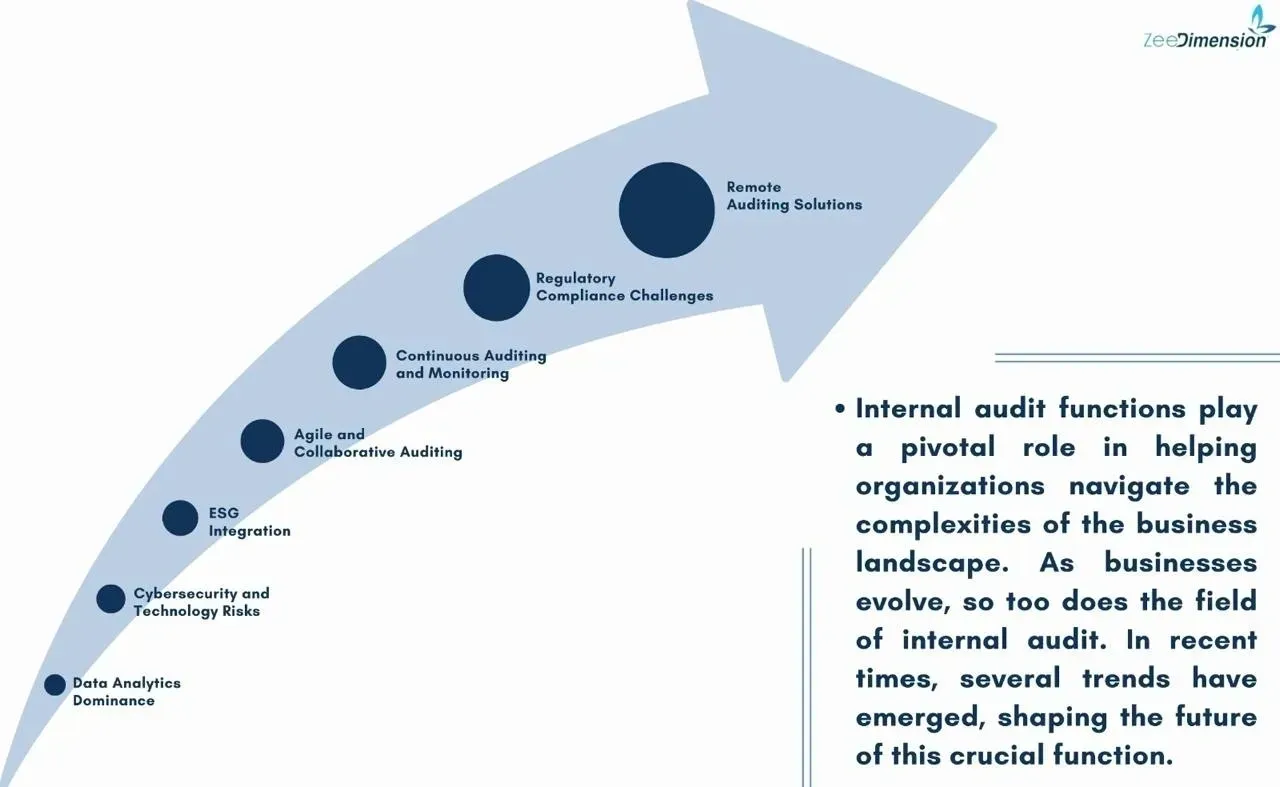
Internal audit functions play a pivotal role in helping organizations navigate the complexities of the business landscape. As businesses evolve, so too does the field of internal audit. In recent times, several trends have emerged, shaping the future of this crucial function.
1. Data Analytics Dominance
One of the most prominent trends is the increasing reliance on data analytics. Internal audit teams are leveraging advanced analytics tools to extract valuable insights from vast datasets. This shift allows auditors to identify patterns, anomalies, and potential risks more efficiently, enhancing the overall audit process.
2. Cybersecurity and Technology Risks
In an era defined by digital transformation, internal auditors are placing a heightened emphasis on cybersecurity and technology risks. With the growing threat landscape, audits now include a thorough examination of cybersecurity measures, data protection protocols, and the overall resilience of IT systems.
3. ESG Integration
Environmental, Social, and Governance (ESG) factors are gaining prominence in the corporate world. Internal auditors are adapting to this shift by incorporating ESG considerations into their audit frameworks. This involves assessing how well organizations are managing their environmental impact, social responsibilities, and governance practices.
4. Agile and Collaborative Auditing
The traditional audit approach is evolving towards agility and collaboration. Internal audit teams are adopting agile methodologies to respond promptly to changes in the business environment. Collaborative tools and cross-functional teams are becoming integral, facilitating better communication and alignment with organizational objectives.
5. Continuous Auditing and Monitoring
The move towards continuous auditing and monitoring is another notable trend. Instead of periodic audits, organizations are implementing real-time monitoring tools that provide ongoing insights into processes and controls. This proactive approach allows for quicker identification and mitigation of risks.
6. Regulatory Compliance Challenges
Navigating a complex web of regulations remains a persistent challenge for businesses. Internal auditors are staying abreast of evolving regulatory landscapes, ensuring that their audits address compliance requirements effectively. This includes adapting to changes in financial reporting standards and industry-specific regulations.
7. Remote Auditing Solutions
The rise of remote work has prompted a shift towards remote auditing solutions. Internal auditors are leveraging technology to conduct audits in virtual environments, ensuring business continuity while maintaining the integrity and effectiveness of the audit process.
Conclusion
As internal audit adapts to the ever-changing business environment, these trends underscore the need for agility, technological acumen, and a broader perspective on risk. Embracing these shifts empowers organizations to not only withstand challenges but also to proactively identify opportunities for improvement. In the dynamic landscape of internal audit, staying ahead of these trends is key to delivering value and safeguarding the integrity of organizations worldwide.







